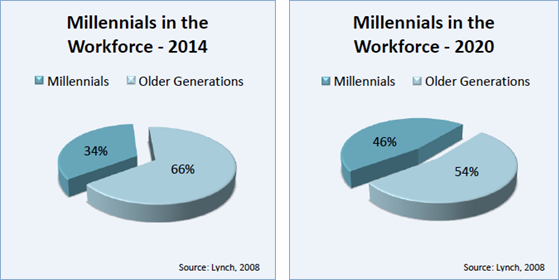
As you can see in this graphic, by 2020, millennials will make up almost half the workforce. This statistic is important because it means workplaces are becoming less diverse in terms of age. The skills, norms, and expectations of millennial workers will take up more space and likely have more influence in the coming years.
Those who are responsible for preparing current K-12 students for their future careers must understand these skills, norms, and expectations in order to succeed. They must also address specific areas that employers see as deficits in the incoming workforce. Work environments usually have more flexibility to adapt to generational changes faster than schools. School can react quicker by collaborating and sharing qualitative and quantitative data with employers and community members.